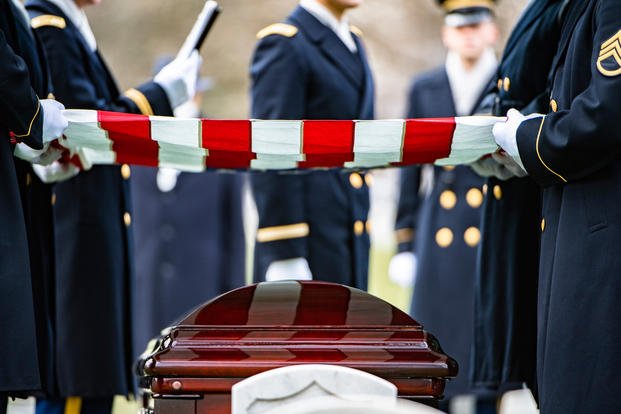Service members and veterans would be able to boost their life insurance coverage by $100,000 under a bill passed by the Senate on Wednesday night.
The bill, dubbed the Supporting Families of the Fallen Act, would increase maximum coverage from $400,000 to $500,000 for both the Servicemembers' Group Life Insurance plan and the Veterans' Group Life Insurance plan. Neither plan has had an increase in the cap on coverage offered since 2005.
"Sometimes, it's the little things that really help," Sen. Tommy Tuberville, R-Ala., the bill's sponsor, said in an interview with Military.com ahead of its passage. "There's not a lot being saved by these military families, there's not a big savings account, and so there's not a lot to lean on if there's a death in the family. So I think this gives us another opportunity to give peace of mind to some of the families."
The bill was approved by the Senate in a voice vote without objections.
Both insurance policies are administered by the Department of Veterans Affairs. Qualified service members, including all active-duty members, cadets at military academies and certain members of the reserves and National Guard, are automatically enrolled in the Servicemembers' Group Life Insurance, though they can choose to decline coverage.
The Veterans' Group Life Insurance is open to veterans who had the service members' plan and are within one year and 120 days of leaving the military.
Neither plan is free -- though the Defense Department reimburses the premium when a service member is in a combat zone -- but they offer service members and veterans a low-cost option for life insurance. Service members and veterans who choose the $500,000 coverage would pay about $6 more per month for their premium than under the $400,000 plan, according to Tuberville's office.
Tuberville, whose father died of a heart attack during military training while on active duty, said he was inspired to sponsor the bill because of his family history, as well as hearing from concerned military families.
An increase in coverage is particularly important now as inflation drives up the cost of living, he added.
"Coming from the education field, I can see the opportunities of couple of kids that their dad passes away at 10 or 12 years old, and then they want to go to college years after that," Tuberville, who previously coached football at Auburn University, said when asked how he envisions the increased coverage helping families.
The bill has been endorsed by several military and veterans organizations, including the Military Officers Association of America and the Wounded Warrior Project.
"The Supporting Families of the Fallen Act is long overdue and will authorize the Servicemembers' Group Life Insurance (SGLI) and Veterans' Group Life Insurance (VGLI) to catch up with inflation," Dana Atkins, president and CEO of the Military Officers Association of America, or MOAA, said in a statement shared by Tuberville's office. "This legislation is ultimately about supporting the families of service members, and MOAA looks forward to growing bipartisan support for this important modernization of life insurance."
The bill must still pass the House before becoming law. A similar bill was introduced in the lower chamber last year by Rep. Chip Roy, R-Texas, and has 13 bipartisan cosponsors.
Tuberville said he has spoken with House members about the bill and thinks it "has good support there."
-- Rebecca Kheel can be reached at rebecca.kheel@military.com. Follow her on Twitter @reporterkheel.
Related: Is VGLI Right for You?













